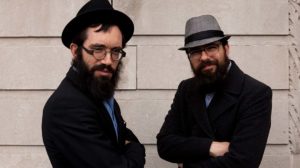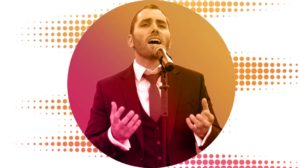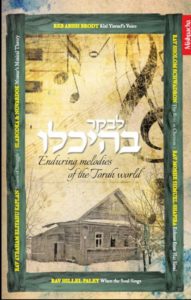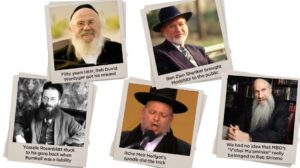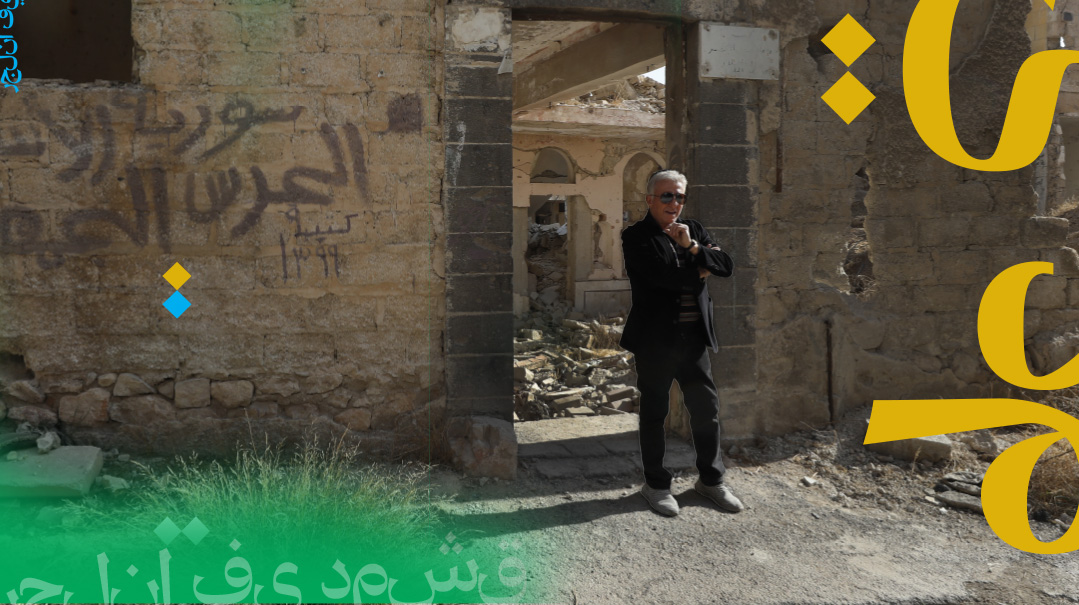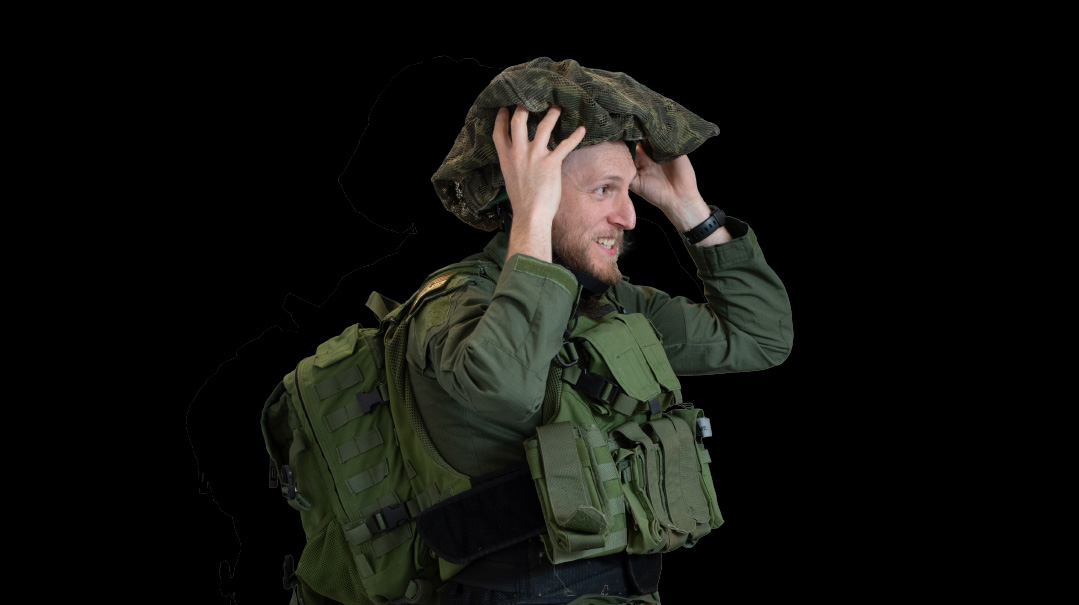Meeting of Hearts and Minds
| July 22, 2020To heal the pain of estrangement between chareidi baalei teshuvah and the family members they left behind, could two Breslovers reunite estranged families on a reality show?
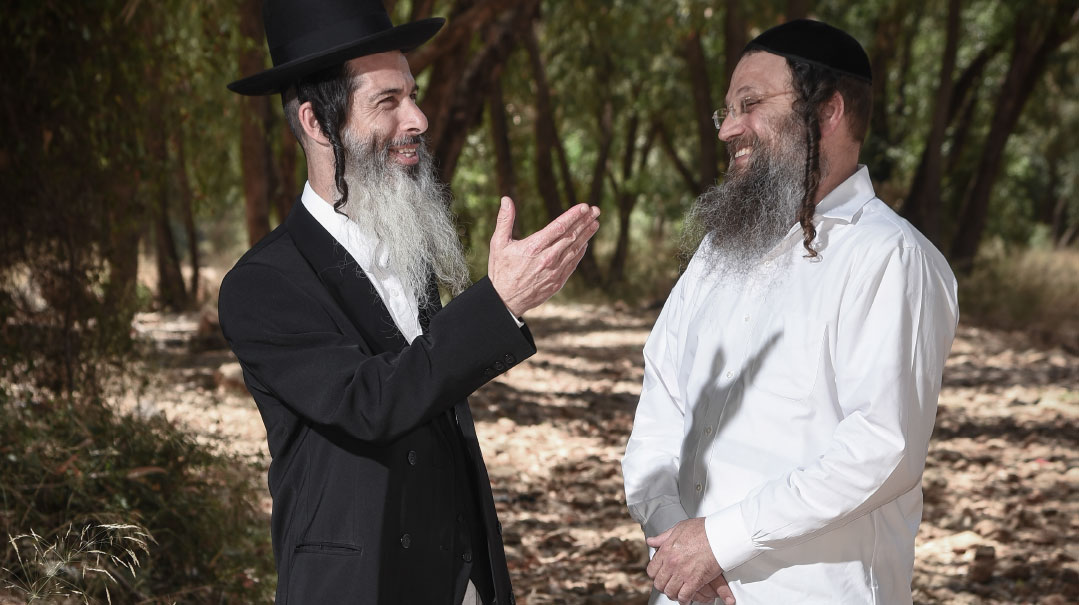
Photos: Ezra Trabelsi, Film files
W
hile people talk about the hopeless rift between the chareidi and secular segments of Israeli society, a pair of veteran film directors have proven — during the course of a gripping real-time documentary — that transformations can occur, that deep scars can be healed, that hearts thought locked and bolted can indeed open and embrace.
Two years ago, directors Uri Groder and Ohad Gal-Oz — both longtime Breslov baalei teshuvah — got together to create what would become known as the riveting documentary Od Nipagesh (We Will Yet Meet Again.) It’s built around a common Israeli reality: the bleeding wound between baalei teshuvah who’ve moved into a new world, and their families who remain in their old lives, often feeling resentful and betrayed. And as integrated as the baal teshuvah has become into mainstream chareidi life, we don’t always realize what he’s left behind. Close family — a father, mother, siblings, and sometimes children — who don’t understand what happened to him.
The idea was to search for real stories — secular siblings, parents, or children, who despite all the pain of estrangement, desired to reconnect before it would be too late. And they succeeded, they say, because as documentary producers, they’ve learned to keep themselves out of the picture. “In this genre,” says Groder, a veteran cameraman and director who founded a religious film institute, “the key is to be quiet, to remain unseen, like the proverbial fly on the wall. Our job is to make everyone else forget that they’re being filmed, to act totally naturally, as if no one were watching.”
Today, with cameras so small you sometimes have to squint to see them, it’s gotten easier for a cameraman to remain unobtrusive. But there was a risk as well for this untested social experiment. The entire project could have exploded — midway through, participants could have simply decided the pain and risk of vulnerability was too great.
Groder and Gal-Oz selected five complex, painful stories — five Israelis whose connection with someone very close to their heart was cut off because of his path to teshuvah and the resentments and hurt that accrued in its wake. The filmmakers then offered to reintroduce them to their estranged relative — on film.
But before that dramatic moment, the secular relatives had to go through an innovative and fascinating connective process. Each was sent to live for ten days in a religious neighborhood in Jerusalem, imbibing the atmosphere and learning the mores of religious life. The process would be accompanied by a “shaliach,” a chaperone of sorts, who would eventually facilitate the meeting they’d been dreaming of for so long. The shlichim were carefully chosen — each was a well-known kiruv personality in his/her own right, with a personal teshuvah story that would help the relative understand the complexities of the journey from both sides.
But here was the first catch: In order to preclude needless arguments, each one of the participants committed to remain silent for the first 36 hours of the encounter with his shaliach, no matter how provoked, shocked, or angry they were by this first up-close exposure to chareidi life. They could talk to just one person: themselves. In a sense, each of the five participants became his own documentary analyst for a day and a half, using the tiny cameras they were given to record their own feelings — often hostile, angry, trapped, and confused — during this initial, strange period.
Each of the men accompanied his shaliach like a shadow, standing near him during tefillos, listening to his learning, observing his acts of chesed; for the women, it meant watching how their religious counterparts manage their large households with little space, seeing how they dress, how they interact with their family members, and tagging along to the shiurim they give. Obviously, the relative often felt like he wanted to scream. But he had pledged silence.
For their part, the shlichim didn’t make life easy for their shadows. The men were forced to sit through shiurim listening to texts that must have sounded pretty horrifying. One of the secular participants, for example, looked like smoke was about to come out of his ears as he sat for an hour listening to a shiur about the intricacies of death by stoning for a Shabbos desecrator. Another relative, an engineer at Intel, had to sit through a Chumash lesson in a Yerushalmi cheder where his shaliach was teaching his students about the Six Days of Creation as actual fact — anathema to this man’s entire worldview.
“At that point,” recalls Groner, “we were actually a bit worried. We were taking a risk, and everything could implode. These were untested waters, and at any moment someone was liable to lose their patience and sabotage the whole project. So in a way, we were playing with fire. One small stumble, and instead of a kiddush Hashem, you create the opposite. You have no idea how it will evolve. The risk is tremendous. But we had tremendous siyata d’Shmaya, and yes, we davened and cried and did hisbodedus at every stage,” he says with unabashed Breslov conviction. “That’s how we work.”
Don’t Erase Yourself
Only after the initial 36 hours of silence ended did the actual week-long journey begin. In each case, it ended in a tearful reunion, fierce hugs, and resolutions to stay connected.
“This process could be a good solution to any rift that we have here in our nation,” Ohad Gal-Oz believes. “We’re always so busy arguing. Sometimes, all you need to do is be quiet for a few hours and simply observe what the other side is going through. Even if you don’t agree with him, you can start understanding him. A secular person who follows a chareidi person in silence, in an effort to truly observe, may not agree with him — but chances are he’ll learn to understand and respect him.”
Even a frum-from-birth chareidi doesn’t always perceive the nuances of the journey his baal teshuvah brother has traveled, say the producers, and that’s why the series, in a way, had elements of their own conflicts. Gal-Oz, who worked in television production before becoming frum, describes the multistaged teshuvah process. First there’s what he calls “revelation” — a person who, until yesterday, was living a good life, earning a living, had a career, decides one day to disconnect and move to a different world.
“At that moment, he’s entirely consumed by this deep internal understanding that there is a Leader of the world, and that there is significance in life,” says Gal-Oz. “But with all that revelation, that turning point can also come with a degree of blindness. When a person suddenly cuts himself off from his parnassah, his family, and his entire self-definition, he doesn’t always understand the extent of the ramifications.”
But at some point after the initial ecstatic leap, he says, reality taps the returnee hard on the shoulder. The bills still need to be paid. The initial thrill begins to wane. And finally, there’s the reality of the chareidim themselves. Those who had previously appeared as pristine angels leading their Shabbos tables suddenly come into focus in high resolution — with their many virtues, but also no small number of flaws. “It’s not easy,” Gal-Oz admits.
This third stage, he says, is perhaps the most difficult. It’s called achieving balance. It’s the absolute understanding of both ends, of recognizing the fact that rather than erase all his formative experiences, the baal teshuvah needs to draw on his secular past and channel it for the benefit of the Jewish future.
Still, the sharp transition often leaves those close to him wounded and battered. “One of the clearest lessons we learned,” Gal-Oz says, “is that in actuality, very few of the disputes stem from a religious issue. In most cases, that’s just the outer layer. After you peel away the religious friction, you realize that there are all the underlying personal issues.”
Complex Times
Uri Groder, born 49 years ago, grew up in secular Ramat Gan and Herzliya as the oldest in a family whose parents immigrated from South America. But that was just a postwar station. “Originally, our family is from Lemberg,” he says. Galician elite.
His father, Yaron a”h, who passed away earlier this year, was a Holocaust survivor with a deep love for the Jewish People and a huge heart. For decades, he served as the executive director of the Wolf Foundation, a prestigious fund that celebrates and promotes achievements in the sciences and arts.
In school, academics didn’t much interest Uri. But the camera did, and after serving in the Air Force, he decided to major in production and theater. It wasn’t long before he integrated into the media industry, as both a photographer and director. He was sent abroad on assignments, and that’s how he wound up being sent to Ukraine — for a documentary on newly opened Uman and the chassidim that had begun to converge on the site for Rosh Hashanah. He never fathomed that within a short time, he would be one of them.
“It was soon after Uman opened up to the public, and I found myself among thousands of chassidim in a distant, remote location. I thought it wasn’t normal. It was a holiday — why were so many people outside Eretz Yisrael? But I experienced something very powerful over there. When I returned, I decided to become a baal teshuvah, to find real meaning in life, and all at once, everything changed.”
He was lucky, he says. Back home, there weren’t many fights. “My father wasn’t religious at all. The only Jewish traditions we kept in our house were Yom Kippur and not to eat pork because ultimately, my father had gone through the Holocaust and he wanted to keep something. At first, my parents thought I had done teshuvah as a fad thing. They figured it would pass, that I’m an artist type and it’s just a religious phase — a year or two at most. But then I got married and the children started coming, and they realized that if they wouldn’t change a little along with me, we wouldn’t have a good relationship.
“My father kashered the kitchen so that I could eat there,” he continues. “And over the years, he even let me arrange a chavrusa for him, and he would take meticulous notes at the shiurim. After he passed away, the rav who learned with him told me that my father told him he’d done it all to connect to me, so that he should have what to discuss with his chareidi son. You could say that he passed away religious. But it wasn’t always like that. When he got sick, I took him for a brachah to Rav Shimon Shapiro in Meah Shearim, who told my father: ‘Do you want to live? Keep Shabbos and Shabbos will keep you!’ My father tried it and kept Shabbos properly for seven years until he passed away — on Shabbos! Shabbos protected him. After Shabbos, he started putting on tefillin and davening. On his last day on this earth, we said Shema and Vidui together.”
Ohad Gal-Oz grew up in Beer Sheva in “what you call a freethinking family.” His mother was a teacher and his father a factory worker. When he was six, his older brother passed away, an experience them left him “in despair of Hashem. I needed to go through a lot to return to Him.”
After being discharged from the army, he began to study theater and acting. In time, he discovered that the stage spoke to him less than the creative work behind the scenes, and soon he found his calling producing and filming documentary programs.
His teshuvah process was slow, step by step. Before his daughter was born he began to put on tefillin. “I learned how to put on tefillin from a digital search,” he says. “I wasn’t always consistent about it. Sometimes it would be every two weeks. But I would daven Shemoneh Esreh. In retrospect I realize that this was, actually, hisbodedus.”
The next stage — both for him and Groder — was a period of disengagement from their involvement in media. It was a complex time. “I wanted to engage with frum people and to learn Torah,” says Gal-Oz. “On the other hand, there was a voice inside me that said, This is your profession, your livelihood, your calling. I was confused.”
Groder, for his part, left it all and went to learn in kollel for two years, until his rabbanim told him to go back to the world of film production — it was a part of him, his calling, and he could do great things with it.
Will the Rabbis Let?
Once the pair found each other and began to formulate the direction of the project, they realized they needed approval from gedolei Yisrael. “Almost every baal teshuvah or potential shaliach we reached out to and asked for cooperation said, ‘There’s no way I can do this without permission from my rav or rebbe.’ We understood them. We would have said exactly the same thing. So each time, we took the name of the rav and went to visit him at home,” says Groder.
One of the shlichos, Dr. Nurit Sirkis-Bank, is close with the Biala Rebbe, an elder member of the Moetzes Gedolei HaTorah who’s known for his work with baalei teshuvah. “She informed us that she was willing to participate, but only if she got an explicit go-ahead from her rebbe,” he says. “So we paid the Rebbe a visit, and he heard all the details. Then he began to expound on the unique essence of a baal teshuvah, and about how Dovid Hamelech’s teshuvah was publicized to show the way for others. At some point during the conversation, the Rebbe turned to us and said candidly: ‘I wish I would be zocheh to be like you.’ This comment infused us with the confidence to walk the path that was strewn with doubts and questions. And in the end, the Rebbe himself gave us a lot of guidance. For example, we asked him at which point we should reach out to the chareidi baal teshuvah and tell him that his relative had embarked on his own journey in order to meet him. The Rebbe suggested that we only do it after the nonreligious relative had made it through the entire preparatory process.”
The pair also approached the heads of several kiruv yeshivos, where they planned to do part of the filming. They met with Rav Reuven Elbaz, rosh yeshivas Ohr Hachaim, where one shaliach, Rabbi Ofer Gal, is on staff. “When the Rav asked us what our goal is, we replied that we want to bring people to teshuvah,” says Groder. “The Rav thought for a moment and said, ‘You should know that this project will not bring people to teshuvah, but it will bring hearts closer together.’ Then, at one point in the conversation, I realized that the people sitting around the table were crying.”
Their next stop was Rav Shalom Arush’s Yeshivas Chut Shel Chesed on the outskirts of Meah Shearim. “Before we even finished,” Groder remembers, “Rav Arush phoned one of his people and asked him to cooperate with us in anything we ask.” Rav Shalom himself appears in one segment, giving encouragement to a young man who hadn’t seen his twin brother in close to two decades and telling him about the greatness of opening hearts.
The process, they say, was its own learning curve. “Throughout the filming, we consulted, davened and did hisbodedus,” Groder notes. “We felt that we were carrying a heavy responsibility, but we also knew we were not in control. We had no idea who would say what, and when, and we were acutely aware that emotions could spin out of control.”
Perhaps the greatest challenge was getting around Meah Shearim and the environs with a film crew. “It was a miracle,” says Gal-Oz. “And people can tell when you come with good intentions and a loving heart. Every time someone approached us and we told them we were working together with kiruv organizations, we saw them all relax.”
I’m Here for You
The producers say what surprised them most was the speed of the reconciliations, after two people who have been fomenting bad energies between them for years suddenly made the effort to have a change of heart. “One important thing we discovered is that when the secular side understands the chareidi side and sees the person behind the black garment, the hatred fades instantly. And when the hatred fades — then you can compromise and get along. A person who does not hate will open his mind. He might even agree to use kosher food and toivel his dishes. He won’t do things just to be provocative. Time after time we saw that after the barrier of ‘anti’ came down, the secular person expressed bafflement at all the resentment, all the anger, he’d felt before: ‘Why didn’t you just explain it to me?!’ he’d ask. ‘I want to be able to respect you.’
“In all the encounters that we facilitated,” says Gal-Oz, “it emerged that religion wasn’t the real reason for the discord. Beneath it was an entire network of egos that went awry — on both sides. In one very powerful scene, the Mizrachi twins remembered their final encounter before they stopped talking; the last sentence Elad Mizrachi’s Breslov twin brother told him was, “Better you should be angry than G-d should be angry,” and that totally shattered Elad. And all that pain and anger, from two sides who didn’t know how to navigate the changes, is what we tried to work through.”
The producers intentionally didn’t involve professional therapists. “We wanted it to be something natural,” Gal-Oz explains, “something taking place in genuine Israeli reality, not on a therapist’s couch. That’s why when we chose each shaliach, we weren’t looking for counselors or social workers. We were looking for strong people who had a genuine desire to help, who’d be willing to go the extra mile to make the reunion happen.”
After the success of the first round, Israeli audiences are already waiting for the more daring Round Two: chareidim who’ve taken the initiative to enter the world of their now-secular relatives in order to rekindle a relationship. “This will be a little trickier,” says Groder, “but in the end, if barriers can fall and hearts can bond, what greater nachas is there to HaKadosh Baruch Hu?” —
TEAM SPIRIT
Real people on a quest for reconciliation
A peek at the estranged relatives and the real-life emissaries committed to helping them reunite and reconcile.
SHOSH OR, 57, high-tech manager. After her son Omer, a musician, became religious and rejected her lifestyle, she felt she’d lost the son who’d become a stranger to her. She hadn’t seen him in ten years, and had never met four of her five grandchildren. She’s angry — at her son, and at the entire religious world, especially the rabbis. But she realizes if she doesn’t do something, her own grandchildren might never know she exists — and deep down, she longs for connection to Omer.
Her shaliach is YAEL MIZRACHI, 48, mother of 11 (including quadruplet boys, for whom she’s trying to arrange shidduchim, a process that horrifies Shosh). Yael is the manager of a government office, is active in communal projects such as Ezer Mizion, and writes a column in a frum women’s magazine. Born in Dimona to a traditional family, she went through the Beis Yaakov school system and married a ben Torah. Yael is a never-give-up type, and refuses to let Shosh off the hook when it comes to facing her own demons.
YAAKOV BUZAGLO, 62, former soccer player and father of a soccer star. He grew up in a religious Moroccan family, but as a teenager with a bright athletic future, felt he had to decide between two worlds, so off came his yarmulke and tzitzis, as he chose a secular lifestyle. He hasn’t seen his religious brother in 30 years, and the last time they spoke was 13 years ago. After years of anger and resentment, he decided it was time to let go.
His shaliach is RABBI OFER GAL, 33, a teacher on staff at Rav Reuven Elbaz’s Ohr Hachaim yeshivah, who lives in Jerusalem’s Ramot neighborhood. But Ofer shocks Yaakov — he’s also a former army commander and former national champion in Krav Maga and other fighting techniques. Yaakov can’t believe that a rabbi and athlete can live in one body.
ELAD MIZRACHI, 36, children’s theater actor and director. Eighteen years ago, when Elad’s twin brother Alon became religious, it was traumatic: Elad felt pained and rejected. Today Alon lives in the Breslov community in the northern town of Yavne’el, and although the brothers barely speak and haven’t participated in each family’s milestones, Elad is filled with longing to reconnect.
His shaliach is REUVEN DE LARAINA, 48, a Breslover chassid and avreich at Rabbi Shalom Arush’s Chut Shel Chesed yeshivah. Reuven was born into a secular family in Ashkelon, served in IDF Intelligence, and then took the standard post-army trip to the Far East, where he got his first taste of spirituality — and where he was miraculously saved in two near-fatal accidents. Today he lives with his wife, Chaya, and their six children in Meah Shearim, near the yeshivah. He is one of Rav Arush’s closest avreichim, and gives Internet shiurim on the Torah of Rebbe Nachman. In an effort to help Elad relate to his brother, Reuven even takes him on a jaunt to Uman.
BELLA RAVUY, 32, writer and teacher. Bella was born in Moscow, where her father, David, became Torah observant, much to her mother’s chagrin. Bella was two when her parents divorced; she came to Israel with her mother and other relatives, and her father, who came a few months later, remarried and made a new home with his wife and seven children in Jerusalem’s Ramot neighborhood. Bella had limited contact with her father — she always felt that his love for her was conditional on her mitzvah observance, which didn’t interest her and which she rejected. But years later, she feels the emptiness of bad choices on both sides, and has an overwhelming desire to reconnect.
Her shaliach is DR. NURIT SIRKIS-BANK, 55, an art researcher and lecturer, and teacher of chassidus. Nurit, daughter of Israeli cookbook-queen Ruth Sirkis, was born in Boston when her parents were there as Israeli emissaries. After her army service and university studies, she worked as a curator for the Israel Museum, eventually drew closer to Yiddishkeit, and became close to the Biale Rebbe, who suggested her shidduch with a fine man from South Africa. Today she lives with her family in Jerusalem’s Bayit Vegan neighborhood. Her warmth encourages Bella to take the greatest step of her life.
GIL PINKUS, 57, engineer at Intel. He was 11 when his parents immigrated to Israel from Poland. When his little brother, Barak, became frum 20 years ago, Gil felt he had nothing more to say to him. Barak felt compelled to share his newfound Torah lifestyle with his family, but they weren’t interested — especially not Gil. But before his father passed away last year, he gave a message to his older son: to try to reunite the family before it’s too late. Yet Gil hadn’t spoken to Barak in eight years, and he’s far from the emotional type.
His shaliach is RABBI RAFAEL KLEINMAN, 59, a popular educational consultant and director of a cheder. Rabbi Kleinman, who grew up in secular Tel Aviv, studied acting after his army service, and then traveled to New York, where he had a promising career in the bag — until he met up with some religious people and soon found himself in Ohr Somayach, first in Monsey and then in Jerusalem. Today he’s one of the most sought-after mechanchim in the country, bolstered by his popular radio show. For Gil, everything is academic — and seeing this talented, accomplished educator using his skills for a higher purpose forces him to reassess his own relationships.
— Rachel Ginsberg contributed to this report
(Originally featured in Mishpacha, Issue 820)
Oops! We could not locate your form.

